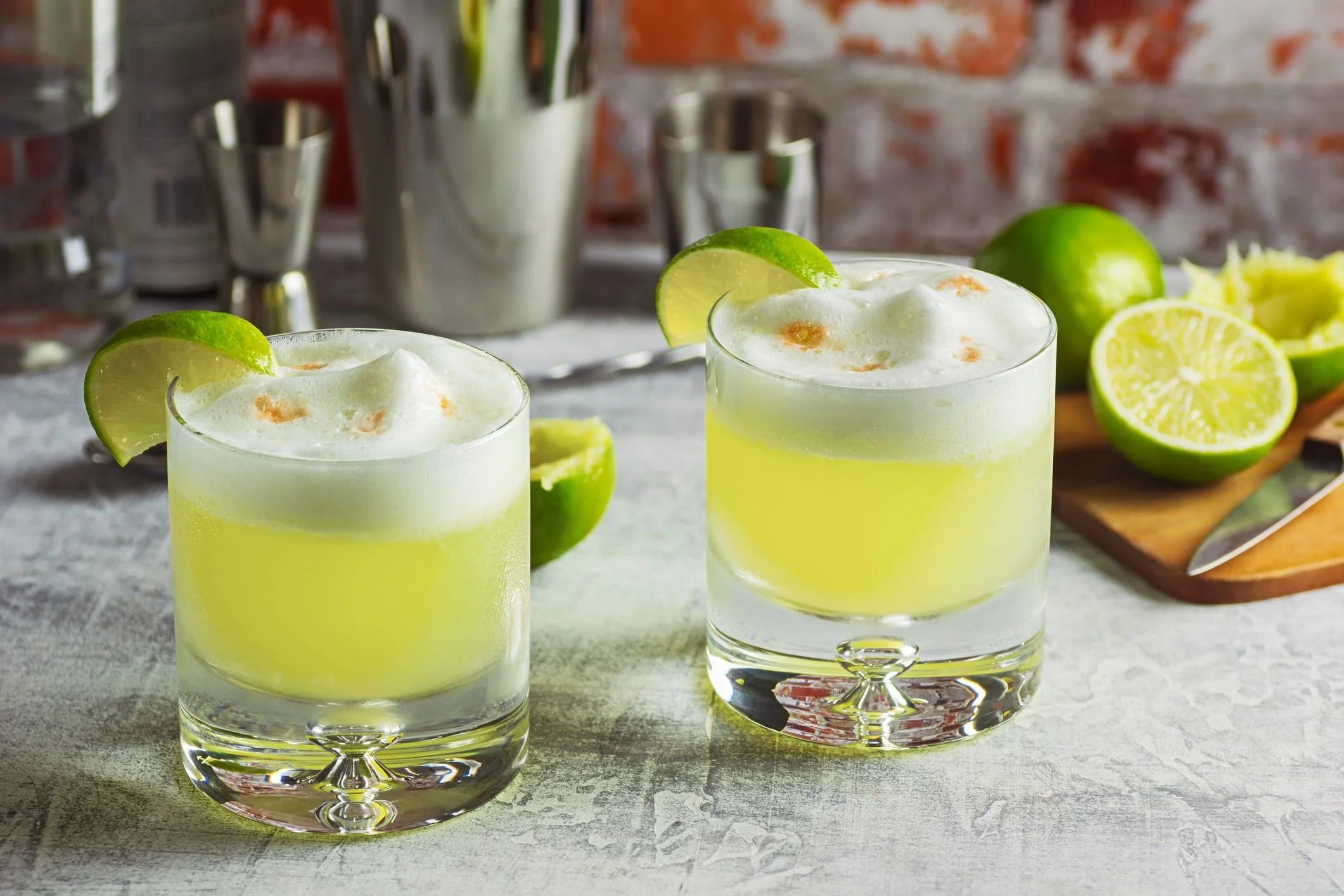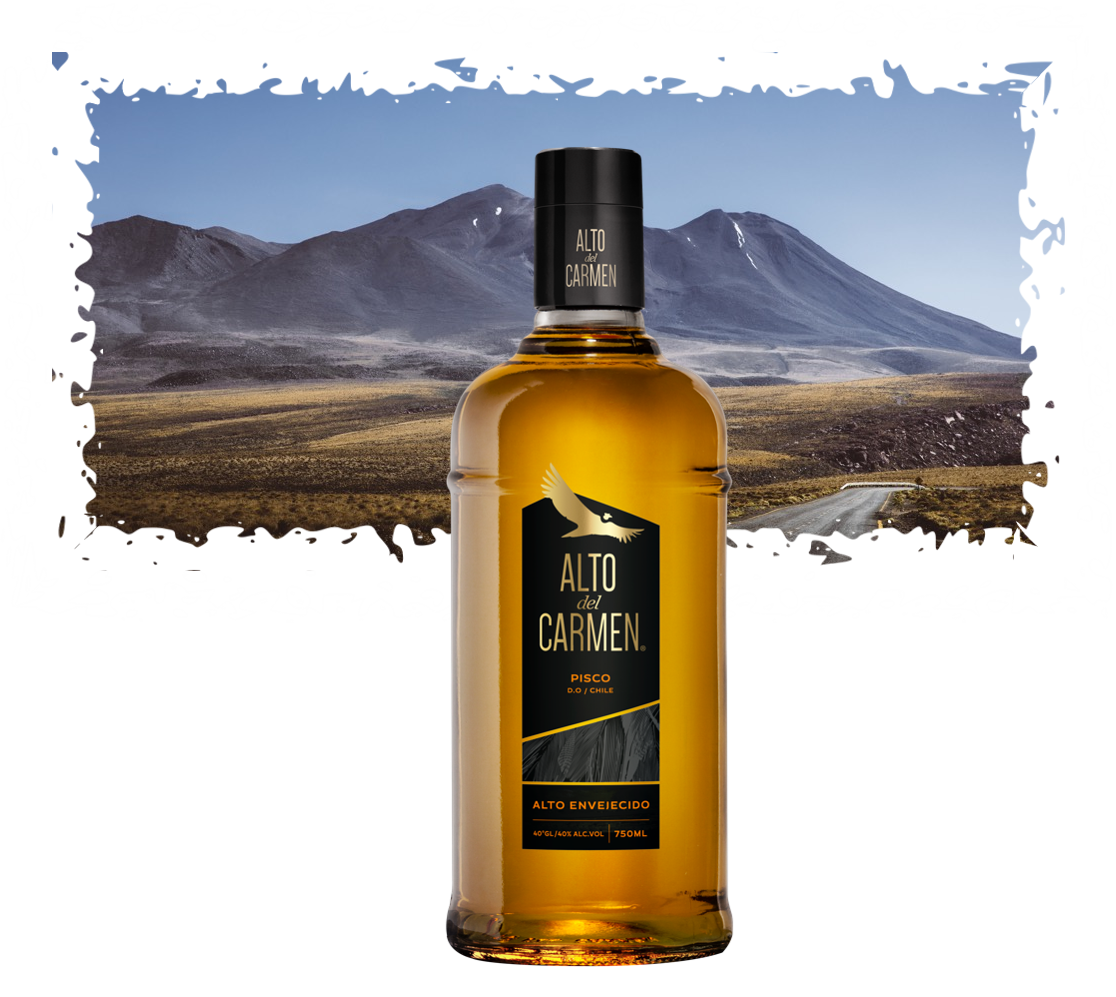So you think you know Pisco ?
Back to Basics: What is Pisco ?
Pisco is an aromatic brandy produced in specific winemaking regions of Chile and Peru. Made by distilling fermented grape juice into a high-proof spirit, it was developed by 16th-century Spanish settlers as an alternative to orujo, a pomace brandy from Spain. It can be found transparent or colored after an aging process in barrels.
Yes but, what is Pisco? What does it mean?
Jury is still out on this one, with actually four different explanations:
1. It comes from the Quechuan word Pisqu (the indigenous language of the Andes, spoken by the Incas and today by their descendants) and means“little birds” .
2. It comes from the name of the Port of Pisco in the Viceroyalty of Peru. This port was named after the flocks of birds living there, again called by local people - Pisqu
3. Clay jars called “Piskos” were used to store distilled beverages.
During the 17th century, South American distilled spirit consumption was boosted by the silver mining activities in Potosí, by then the largest city in the New World, today situated in Bolivia. “Piskos”, were transported in their thousands by mules from the Port of Pisco to Potosí to satiate the ever growing demand for distilled spirits.
4.Some also claim that those clay jars were actually branded with the port of destination. In the 16th Century, the main shipping hub on the Pacific Coast was… the Port of Pisco. So the clay jars were branded “Pisco”, once again linking to Quechuan Pisqu. They were then shipped by mules to Potosí in those clay jars called “Piskos”.
Where is it from?
Made from selected grapes, Pisco production in Chile is restricted by the Appellation of Origin Controlled (AOC) which was put in place back in 1931, making it the second oldest spirit appellation in the world after Cognac (protected since 1909).
Since 1991 it is also legally protected by Peru.
The AOC of Pisco is therefore actually bi-national, belonging to both Chile and Peru as the co-founders of the category. But the two countries have distinct regulations giving an entirely different flavor profile to the spirit itself.
How does Pisco production work in Chile, the largest producer of Pisco in the world?
The whole production process from grape growing to bottling can only take place in the Atacama and Coquimbo regions of Chile, and in 5 defined valleys - Copiapó, Carmen, Elqui, Limarí and Choapa exclusively.
Anything produced outside of these valleys cannot be called Pisco, but is labeled as “Agua Ardiente” (Eaux de vie).
Can you use any grapes ?
No, to produce Chilean Pisco you can only use 12 different varietals, of those, 5 are the main grapes that are used for the best quality pisco.
Aromatic grapes are used for premium pisco because of their high concentration of aromas that define the character of the pisco.
Muscat is the preferred grape for higher quality pisco because of their higher sugar content, concentrated tropical fruit aromas that are ideal for both wine and spirits making.
Muscat grape flavors will vary according to the region where they are made, the winemaking techniques, and the variety of Muscat grape used (the “terroir”, similar to wine).
What do you do with the grapes then ?
After the harvest the grapes are processed to produce white wine, the base of the pisco spirit.
The wine is then distilled in copper alembics for discontinuous distillation in batches, the head (first batch of distillation produced) and tails (last part of distillation) are distilled again and the heart (the middle part, but also the best, purest and smoothest) is use as the base of the pisco. The spirit can be distilled up to 3 times for even smoother results.
After the spirit is distilled it stays in stainless steel tanks for a minimum of 60 days or wooden barrels for a minimum of 6 months, depending on the product that is being produced (transparent or envejecido which means “aged” in Spanish).
The whole process needs to be done within the 2 geographical regions defined in the A.O.C regulation (Atacama & Coquimbo).
How to enjoy?
The Pisco Sour is a classic cocktail hailing from South America, specifically Chile and Peru. The drink was first mixed in Lima, the capital of Peru, in the early 1920’s by an American bartender named Victor Vaughn Morris.
He opened Morris’ Bar in Lima in 1916, and this is where the Pisco Sour took off. The Pisco Sour uses pisco as its base liquor and is a twist on the classic Whiskey Sour.
Legend says he started using pisco when he finished his last bottle of whiskey and when seeing the great success of his new cocktail never switched back.
Some of the biggest stars became the strongest advocates of Pisco sour, from Ernest Hemingway to John Wayne.
Ernest Hemingway
John Wayne
How do you make it?
2 oz Pisco
1 oz Lemon Juice
1/2 oz Sugar Syrup
1 oz Egg white
1-2 dash Angostura Bitters
Shake all the ingredients except the bitters in a cocktail shaker with ice. Shake until the outside of the shaker becomes frosted then strain into a glass. Dash a few of drops of Angostura bitters over the top and serve.
What Pisco brand to use?
There are many brands and styles of Pisco, so maybe the best is to give you a few options:
1
Capel: the icon of Chilean Pisco à to drink like a true Chilean
Capel Pisco is the number one pisco brand in Chile and indeed, the world! It was voted in the Top 10 Most Trendy Pisco Brands in the World’s 50 Best Bars 2021.
Sourcing grapes from all five Chilean valleys the wine goes through a double distillation process and rests in American oak casks or stainless-steel tanks depending on the style.
Capel has the Fair for Life Certification for sustainable practices and products are under the strict Appellation of Origin of Pisco Chile (D.O.C), a highly reputable accreditation demanded by the world’s most reputable and socially and environmentally responsible buyers.
2
Capel Moai: Chilean Heritage and Easter Island Heritage à if you want to go off the beaten track
The Capel Pisco Special Edition is a tribute to the Rapa Nui culture of Easter Island in Chilean Pacific Ocean. It encapsulates the authenticity of Pisco, reflecting the spirit of all the people of Easter Island as it offers a perfect balance between traditions and a flavorful spirit.
Made with the best Muscat grapes from all five Chilean valleys it is aged for 8 months in American oak casks, before being filled in handmade bottles designed by artisans on the islands themselves. The bottle is inspired by the unique Moai statues of the island, each rock statue is called “Aringa Ora Ata Tepuna” which translates as “Live Face of our Ancestors”.
It also has the Fair for Life Certification and products are under the Appellation of Origin of Pisco Chile (D.O.C).
3
Capel Sour y Mix if you want to enjoy a low abv cocktail ready to drink anywhere at any time
Made with Capel Pisco, number one Pisco brand in the world, and natural ingredients and flavours. Capel Sour y Mix offers a wide portfolio of Ready-To-Drinks cocktails with a tropical twist, for easy drinking just pour it over ice and enjoy, or if you want it as a frappe mix it with ice in a blender.
As it uses Capel Pisco, it also has Fair for Life Certification for sustainable practices and products are under the strict Appellation of Origin of Pisco Chile (D.O.C).
4
Alto del Carmen for sophisticated drinkers looking for a step up for their Pisco cocktails… or to enjoy neat
Alto del Carmen is a much more premium offering. The brand takes its name from the locality of Alto del Carmen in the Huasco Valley at the southern reaches of Atacama Desert, where pisco grapes are grown and the Andean Condors rule the skies.
Produced exclusively from the highest quality aromatic Muscat grapes from Huasco Valley, it is triple distilled for an extra smooth finish.
Alto del Carmen has the Fair for Life Certification for sustainable practices and products are under the strict Appellation of Origin of Pisco Chile (D.O.C).
While Alto del Carmen has a wider portfolio, we like to focus on two particular Piscos as they each offer something different to the palate:
1. The Alto Reservado Transparente
This transparent Pisco with its Muscat nose is distilled twice to ensure a smoother and unctuous finish. It is then put to rest for a year in stainless steel tanks to keep its shiny transparency.
Made with both Pink Muscat and Muscat of Alexandria, among the most premium grapes to be used in Pisco, the nose is clean, citric, with a medium intensity of Muscat and notes of Azahar flower (a type of orange blossom). In the mouth, it is both sweet and fresh.
The best way to enjoy it? Either neat at a very cold temperature (less than 10ºC) or in a traditional Pisco Sour, or as we like to call it an Alto Sour!
Below our suggested recipe:
<Ingredients>
45ml Alto Del Carmen Transparente
20ml Fresh Lime/Lemon Juice
10ml Rich Simple Syrup
15ml Egg White
Dashes Angostura Bitters
<Method>
Dry shake and shake, add all the ingredients into a cocktail shaker, except for the ice, and shake for few seconds until foam is formed, add the ice, shake well for 15 seconds double strainer to a martini coupe glass, decorate with few drops of Angostura Bitters on top of the foam..
*Notes: use pasteurized liquid egg white for safety reason and allergies
2. The Alto Envejecido
Alto Envejecido got his name from the Spanish word “Envejecideo” meaning “aged”. In fact, this evolved and elegant Pisco is aged for at least two years in American oak barrels.
Again made with premium grapes of Pink Muscat and Muscat of Alexandria, its barrel ageing gifts it with an intense and shiny amber color as well as fine and persistent legs. On the nose, strong notes of Muscat can be detected, along with plums with syrup, raisins and nuts. On the mouth it is sweet and smooth, round and evolved.
The best way to enjoy it? Either as a digestif (between 10ºC and 16ºC) or in Chilean twist to an ever famous Italian cocktail: the Alto Negroni
Below our suggested recipe:
<Ingredients>
45ml Alto Del Carmen Envejecido
30ml Amaro Di Angostura
30ml Oscar.697 Rosso Vermouth
Dashes of Angostura Orange Bitters
Orange peel for garnish
<Method>
Stir, add all the ingredients With ice prepared , stir well for seconds strain into a rocks glass.
To find Alto del Carmen in China, get in touch with Summergate!



























